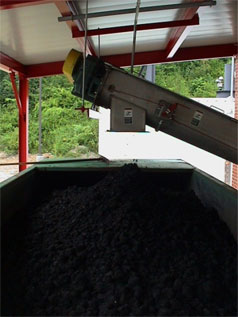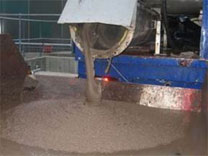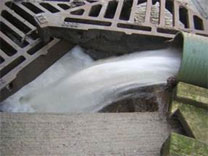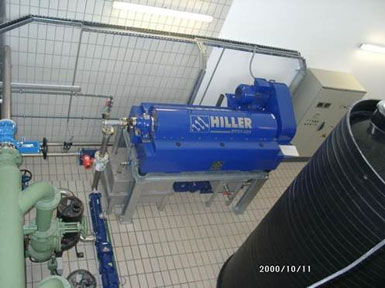Sludge Thickening
The thickening of activated sludge is a common practice many wastewater treatment plants. These plants use a biological treatment process to reduce the wastewater COD and BOD before discharging downstream into the environment. During the process colonies of bacteria develop and grow forming a biological body which produces a solid waste as it feeds on the chemicals and nutrients.
It is necessary to continuously purge the growing biological mass to control its activity and efficiency. The purge stream is usually in the form of dilute slurry, 0.5% to 3% dws, which is easier to handle when first thickened. Some of the thickened slurry can be returned to the biomass to maintain an optimum concentration of bacteria. The remaining waste activated sludge is processed for disposal.
A simple yet proper decanter centrifuge installation provides the flexibility to “adjust” operating parameters to produce the desired choice of thickened sludge concentrations. The installation allows for the use of a polymer to help the separation but polymer is not necessarily essential.
The decanter centrifuge will thicken an activated sludge without polymer producing solids at an ideal 6%-dws for land spraying applications. However, the liquid centrate remains cloudy, 0.2%-dws, and can still pose a disposal problem. Many industrial and municipal waste treatment facilities will often use a low concentration of polymer to clear up the centrate to approximately 200-ppm dws.
By increasing the polymer concentration and adjusting the bowl and conveyor speed of the decanter centrifuge, the system will provide clear centrate and solids discharged at 8%-dws. Once the system is optimized, the Hiller scroll drive system will automatically adjust its speed to control the consistency of the discharged solids cake. These are the parameters typically used to produce thickened digester feed slurry.

Increasing the concentration of polymer further and again adjusting the decanter centrifuge operating parameters will thicken the feed and produce stackable solids at 12%-dws. And once the operating conditions are optimized, the decanter centrifuge will control the solids discharge with the automatic adjustment of scroll speed.
(For example a plant thickening 800,000 gallons per day of activated feed slurry at 1%-dws up to 8% pump-able slurry with a clear centrate, would require approximately 66 to 100-lbs per day of polymer). The decanter can both thicken and dewater, switching between the two process applications in a matter of minutes without interruption of the feed slurry.

It is not possible to state cake dryness figures given the process variations that exist from waste treatment plant to plant but the decanter centrifuge will usually produce a cake that is dry to the touch and sometimes friable. Slurries from a primary clarifier will typically range from 28 to 36%-dws. And while waste activated sludges can also appear friable they are typically only 15 to 22%-dws. Even though moisture concentration can vary widely, consistent solids will be discharged from the decanter centrifuge by optimizing the system operating parameters.
Advantages of DecaThick thickening decanters compared to drum or belt thickeners:
- Fully enclosed = minimized aerosol emissions with less odor and corrosion
- 2 operating modes:
- without polymer dosing
- with polymer dosing (increased solids capture)
- Much lower polymer consumption compared to drum or belt thickeners
- No filter cloth which is susceptible to clogging (fines, excess polymer, fats), and to wear & tear
- No continuous consumption of valuable water for sieve flushing
- Note 1: Filtrate can be used for sieve spraying, but at the cost of increased risk of cloth blockage
- Note 2: Power usage for wash water make-up and pressurizing is noticeable
- Operation without polymer:
- Interesting when sludge thickens well
- Requires full speed
- Capacity and performance dependent on SVI
- Operation with polymer dosing:
- Capacity and performance far less dependent on SVI
- Better suited for sludges with high SVI or highly variable SVI
- Operation at lower speed possible = lower energy consumption
- Generally higher solids capture rate than without polymer dosing
- Generally higher capacity than without polymer dosing
- Polymer dosing can be switched off when sludge quality is good
- Fully automated operation
- Feed solids monitoring can be added to control polymer dose rate (by adjusting sludge feed flow or polymer flow) and/or thickened sludge DS (by adjusting scroll speed)



Top of Page
